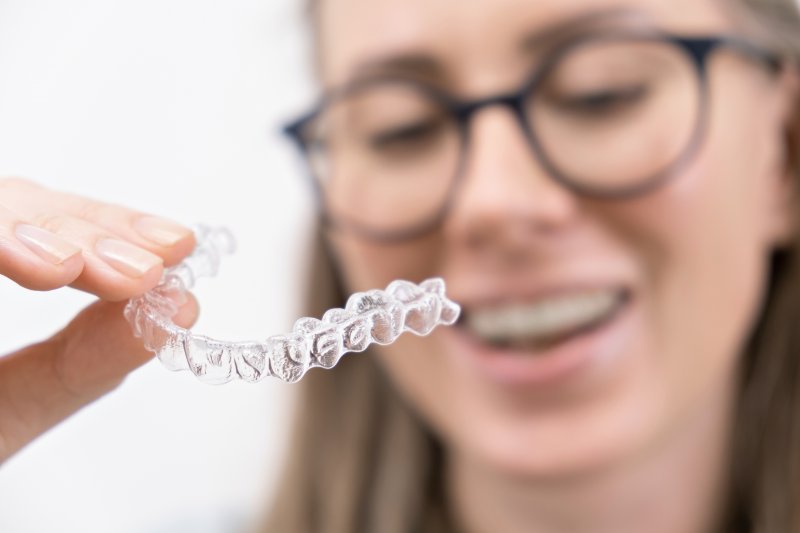April 8, 2022
Why to Floss During Your Invisalign Treatment

Adding floss to your Invisalign experience might sound tedious, at least at first. You already make sure to take out your trays before eating. Plus, you remember to brush your teeth before putting them back in your mouth. Do you need to floss on top of everything else?
The short answer is “yes.” For a longer answer, read these facts on flossing with Invisalign by your Ann Arbor dentist.
Why Floss with Invisalign?
For starters, you’re probably using Invisalign because your teeth aren’t properly aligned. Said misalignment causes them to overlap, preventing toothbrush bristles from thoroughly removing food particles, plaque, and bacteria. As it happens, flossing is the best way to clean between teeth.
Furthermore, keep in mind what happens to your mouth after you eat. When food gets lodged in your teeth following a meal, those particles will sit in a bacteria-filled environment if trays cover them. In that scenario, you might get tooth decay or an infection, not to mention bad breath. Thankfully, you can use floss during your treatment to stop this from happening.
Remember to Brush & Rinse First
Of course, you’ll need to brush your teeth and rinse your mouth before you floss.
Brushing after a meal will help remove food particles that flossing alone won’t catch. You can’t count on a string to get everything out, and brushing removes a large percentage of debris.
Swishing water or mouthwash around your mouth will also break particles loose. You’d be surprised at how much is left after brushing, so rinse thoroughly.
A Step-by-Step Guide to Flossing
If you need a refresher on excellent flossing, here are steps you can follow to make things easier:
- Step 1: Choose a brand of floss that glides between your teeth.
- Step 2: Remove a long piece of dental floss, about 18 cm. While this might seem like too much, you’ll need extra room to hold the floss.
- Step 3: Wrap the ends of the dental floss around your fingers, leaving a few inches to work between your teeth.
- Step 4: Glide the floss between your teeth and move towards the gum line.
- Step 5: Work the floss at this point by creating a “C” and using an up and down motion.
- Step 6: Finally, move the dental floss between your fingers to reveal a clean section. Then move to the next tooth and repeat until you’ve flossed all teeth.
You should understand by now why flossing is vital for your Invisalign treatment. So, the next time you take out your trays, have some dental floss handy!
About the Author
Dr. James Olson is a dentist practicing in Ann Arbor, MI, having earned his DDS from the University of Michigan’s School of Dentistry. Passionate about education, he has expanded his dental knowledge by attending the Las Vegas Institute for Advanced Dental Studies. As a member of the American Academy of Clear Aligners (AACA) and an attendee of the 2019 Invisalign Summit, he is a top expert on clear braces and treatments concerning them. Dr. Olson currently practices at his self-titled clinic and can be reached at his website or by phone at (734)-996-0200.
No Comments
No comments yet.
RSS feed for comments on this post.
Sorry, the comment form is closed at this time.

